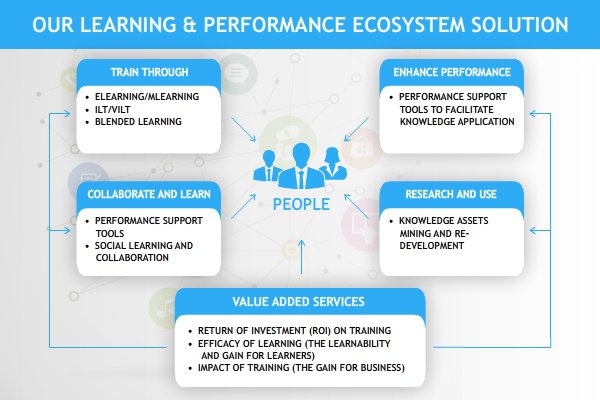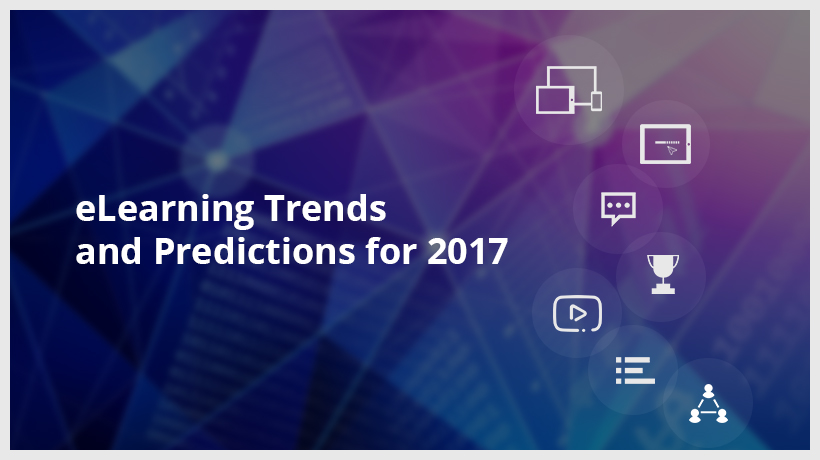
In this article, I will touch upon what social learning is and the reasons why you should adopt it. I will also outline how exactly you can use it to enhance your existing learning strategy and the business gains that will accrue as a result.
How To Use Social Learning To Enhance Your Existing Learning Strategy
Collaborative learning has always had a positive impact on learners. The advent of social media has provided experts in the Learning industry with more food for thought with regard to creating better and effective learning solutions that leverage on collaborative learning. Let us see how you can practically use social learning to spice up your existing learning strategy.
I begin with a definition of social learning and why adopting social learning makes sense, and how it will foster collaborative learning in your organization. I will also walk you through both learner and business perspectives that clearly establish a business case why you should use it. (These inputs are from my previous article Why You Should Adopt Social Learning).
What Ιs Social Learning?
Simply put, social learning is learning with and from others. Social learning is not restricted to any one type of learning. If you’re learning using online social media tools like Facebook, Twitter, LinkedIn, and so on, or gaining knowledge during informal offline activities such as group discussions, conference interactions, or even over a coffee conversation, it’s social learning all the same.
Why Should You Adopt Social Learning?
Social learning not just benefits learners, but your business as well. The kind of positive learning experience that social learning provides to learners has a direct impact on the effectiveness of your learning initiative, which in turn translates into significant business gains and a positive ROI.
The Learner Perspective
How learning happens: According to the 70/20/10 model for Learning and Development, most of us pick:
-
- 70 percent of our knowledge from our on-the job experiences.
-
- 20 percent from interactions with others.
-
- 10 percent from structured or formal training.
Using social learning clearly facilitates learning by interaction through others.
Appeals to Millennials: With every passing year, Millennials add up to the size of the world’s total learning population. They form a notable chunk of the overall learner population already. The millennial generation thrives on going social – the percentage of Millennials using social media to look for information (59%) is way higher than those in the older age group categories (29%). Millennials engage in social networking frequently, use social media for their various infotainment needs, and can adapt quickly to social learning.
Social learning empowers learners: Have you observed your productivity go up and your tasks witnessing earlier completions when collaborating with your peers on the job? There might have been times when your mind just stopped working and you took to your Messenger to seek help from your colleague. A couple of minutes on the chat window and once you get the inputs or a little push that you needed, you’re back on track again. That’s the sort of impact social learning has on your learning and performance. Social learning helps bring about greater application of the learning on the job besides giving learners greater control over their learning.
The Business Perspective
Organizations will see value in social learning as it:
-
- Connects disengaged learners.
-
- Helps learners self-organize.
-
- Facilitates collaboration.
-
- Can be applied across training needs: While social learning can be applied to supplement varied training needs, it is very effective for new initiatives including specific change management mandates.
How Exactly Can You Use Social Learning To Enhance Your Existing Learning Strategy?
I quote from one of my previous articles Learning And Performance Ecosystems: 5 Things Your Boss Wants To Know. One of the approaches is to work with a bigger picture of “Learning and Performance Ecosystem” and drive training through multiple channels (including formal and informal learning, social learning, and performance support). This combination ensures that multiple learning avenues are available to learners, and instead of one-off trainings, the focus shifts to “learning as a continuum”.
To illustrate how this can be designed, here is a quick glimpse of a typical “Learning and Performance Ecosystem” solution.
What Is The Additional Value This Approach Will Bring?
What we have done here is to retain the existing formal training piece and extend it to include aspects that facilitate individual and collaborative learning. As a result, the focus has shifted to social learning as well as informal learning as shown here:
1. Learn collaboratively (social learning).
This could include:
-
- Learning from peers.
-
- Communities of interest.
-
- Coaching and mentoring.
2. Just-in-time learning aids.
Performance Support Tools (PSTs) that facilitate application of learning on the job.
Through this, we can provide a multi-channel learning platform to the learners. Given the different learning styles of different learners and the dynamics of increasing Millennials in workforce, these measures will help you accomplish your goals of:
-
- Knowledge gain.
-
- Knowledge application on the job.
-
- Positive ROI on training.
How Can You Establish Quantifiable Gains For The Learners And Business?
To maximize the impact, you need to relook at your existing learning strategy and adopt the following aspects:
1.Change from discrete formal training to a “learning journey” based approach.
Rather than having a finite number of formal training sessions that can happen for a finite number of days in a year, give the learners stackable bites of learning throughout the year.
2. Provide a clear learning path or journey for each learner.
3. Provide accesses to all formal and informal learning assets on the device of the learner’s choice.
You can extend your learning material from traditional eLearning to mLearning or mobile learning that is available on tablets and smartphones as well.
4. Use microlearning assets extensively.
These small nuggets (running for a few minutes) can be used for both formal and informal learning. You can design a learning path that features multiple resources (microlearning nuggets). These are available to the learners within their work-flow promoting their usage at the time of need.
5. Use innovative formats in learning delivery to increase retention (and completion rates).
You can use videos and other rich media formats extensively. You can also use mobile apps for both learning and for assessments.
6. Use gamification.
The gamification solution gels well with the social learning concept as it induces the competitive spirit, makes learning fun, and is aligned to a specific learning outcome.
I hope this article gives you compelling reasons to adopt social learning and more importantly how exactly can you use it to enhance your existing learning strategy. If you have any questions, do contact me.
Earlier edition of this article was published on eLearning Industry : https://elearningindustry.com/can-social-learning-spice-existing-learning-strategy




